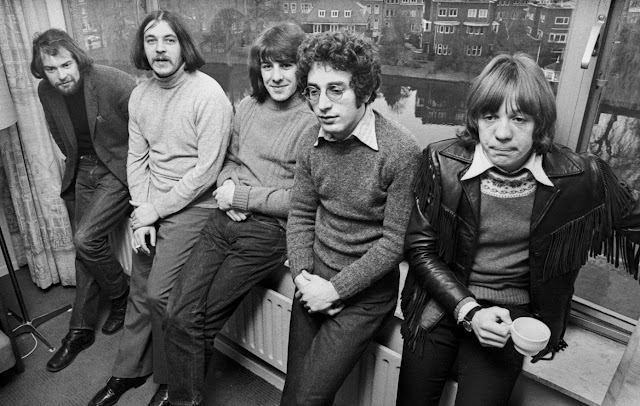by Stuart Penney
So, farewell to wordsmith extraordinaire Keith Reid, who died on March 23 at the age of 76. I encountered him only once, extremely fleetingly. Shortly after I moved to London in the summer of 1967 my job as a messenger boy for a West End music publisher took me to Golden Square in Soho, not far from Regent Street. On this particular day I was tasked with delivering a package (on foot, as usual) to the offices of one of the film companies located there.
As I crossed the square, I became aware of a stylish figure walking a few yards in front. He had an impressive Hendrix-style halo of curls, a Carnaby Street military style jacket and, best of all, he was wearing an extremely desirable pair of red Cuban heel boots. In 1967 those boots would have cost him close to £25, or the equivalent of three-week’s wages for the likes of me. As Cuban heels were, ahem, inclined to do, the boots affected his gait somewhat, causing him to teeter slightly forward as he walked. 56 years later I can picture that image now as vividly as if it were yesterday.
He entered the office block slightly ahead and turned to hold open the door. During this random act of courtesy, I saw his face for the first time and recognised the man in the wire granny glasses right away. It was Keith Reid who had written the words to what was indisputably the biggest hit single of 1967, “A Whiter Shade of Pale.”
He asked for directions to whatever office he was visiting. I can’t recall where I was headed, but it was on different floor to his destination. So, I directed him to a board showing a list of businesses in the building and went on my way.
As founder and non-performing member of Procol Harum, Reid wrote the lyrics for every one of their albums and singles from 1967 to 2003. “A Whiter Shade of Pale,” their first and biggest hit, topped the UK charts for six weeks and reached number one in dozens of other countries around the world, eventually selling 10 million copies along the way, one of the few singles ever to achieve this figure. Although not performing with Procol onstage, he was often pictured with them in the music press, making him instantly familiar to those of us who pored over such details.
But Reid didn’t confine his writing skills to Procol Harum. He also penned lyrics for others. In 1986 he co-wrote “You’re the Voice” for John Farnham, one of Australia’s most enduring pop stars. The song appeared on Farnham’s album Whispering Jack which was a massive hit down under, achieving sales of 24 x platinum* and becoming the biggest selling Australian album of all time. It also sold well in other parts of the world, particularly Scandinavia.
*(In Australia an album qualifies for platinum certification if it exceeds 70,000 copies shipped to retailers. So, 24 x platinum equates to 1,680,000 albums, or one record in approximately every five homes. Not bad for a country of just 26 million people).
“You’re the Voice” was named 1987 Australian single of the year. It topped the singles chart in Germany and reached the top ten in the UK and elsewhere.
In an attempt to rally voters, the song has been used in TV adverts during Australian state and federal elections and during the COVID 19 pandemic “You’re the Voice” was played by anti-lockdown protesters in Melbourne and elsewhere.
Consequently, it was no surprise when, in an act of unabashed patriotism and/or blatant parochialism, virtually all the Australian newspaper obituaries I saw of Reid featured headlines such as “You’re the Voice Songwriter Dies” and covered the John Farnham connection in great depth before mentioning “A Whiter Shade Of Pale” almost as an afterthought.










.jpg)












.jpg)




